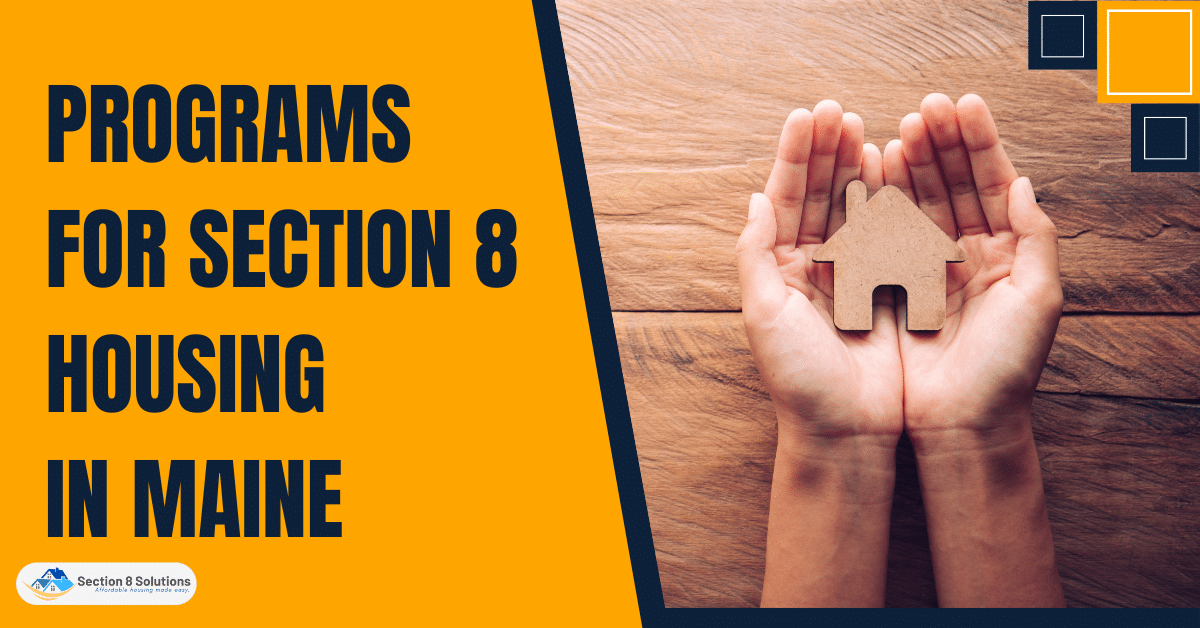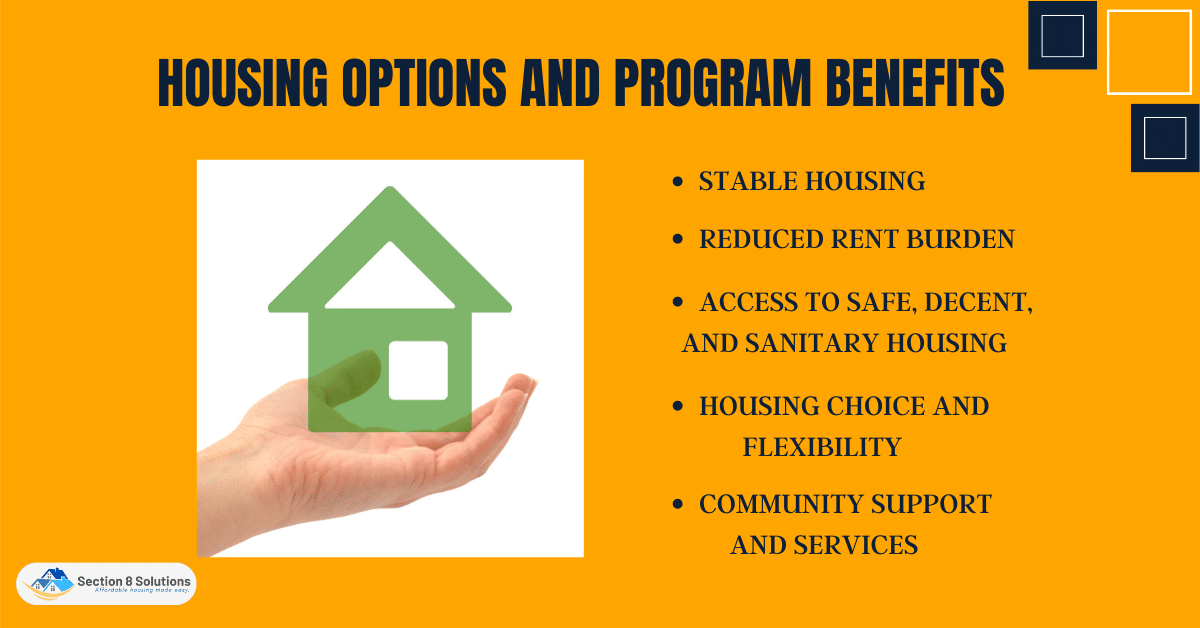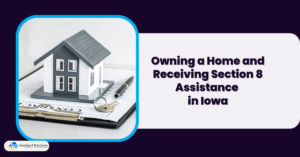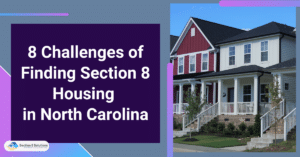Maine has various Section 8 housing programs for low-income families and individuals. These Maine State Housing Authority services reduce housing costs and foster stable communities. These critical programs provide rental assistance and secure, decent, and hygienic housing to eligible participants.
This blog series will examine Maine’s Section 8 Housing programs, including the application process, rental assistance, housing possibilities, and the beneficial effect these programs have on participants.

Maine’s Section 8 Housing Programs
Maine offers several Section 8 Housing programs to cater to the diverse needs of low-income individuals and families in the state. Two prominent programs are the Housing Choice Voucher Program and the Project-Based Voucher Program, each with its own set of eligibility criteria and benefits.
Section 8 vouchers, also known as Housing Choice Vouchers, help qualified participants pay rent. Section 8 voucher holders may pick private landlords for homes under this scheme. The program pays the gap between the tenant’s contribution and the appropriate rental cost, making housing more cheap and accessible.
The Housing Choice Voucher Program has eligibility requirements. Family size and median income set income constraints. Qualified candidates have earnings below 50% of the region median. To accommodate diverse families, household size restrictions are addressed. U.S. citizens or qualified immigrants must apply.

Application Process
Maine Section 8 Housing applications are vital to obtaining affordable housing. Following the procedure and completing all documents is crucial. A step-by-step application tutorial is here:

- Determine Eligibility: Review the eligibility criteria for Section 8 Housing programs in Maine. This includes income limits, household size requirements, and citizenship or eligible immigration status.
- Gather Required Documents: Gather all application documentation. Proof of identification, income, bank statements, and assets or expenditures are usual.
- Obtain an Application: MSHA offers Section 8 Housing applications. Applications are accessible online or at MSHA offices or distribution sites.
- Complete the Application: Fill out the application form accurately, providing all requested information. Double-check that all sections are completed, and ensure that supporting documents are properly attached or included.
- Submit the Application: Application submission is flexible. If the MSHA website allows electronic submission, you may submit it. Mail or hand-deliver the application to MSHA offices or drop-off sites.
- Confirmation and Waiting Period: MSHA will confirm application receipt. Record this confirmation. Demand and resource availability determine application processing time.
It is important to note that the Section 8 Housing application process requires thoroughness and accuracy. Ensure that all information provided is true and complete to the best of your knowledge. Inaccurate or false information may result in disqualification from the program.
Rental Assistance and Voucher Distribution
Rental assistance is a cornerstone of the Section 8 Housing programs, providing critical support to low-income individuals and families in affording safe and decent housing. Understanding how rental assistance works, including the calculation of housing subsidies based on income and the concept of fair market rent, is essential. Here’s an overview:
In the Section 8 Housing programs, rental assistance is calculated based on the income of the participant or household. Generally, participants are required to contribute 30% of their adjusted gross income towards rent and utilities. The remaining portion is covered by the housing subsidy provided through the program.
The concept of fair market rent (FMR) is crucial in determining the maximum subsidy amount. Fair market rent refers to the average rental cost for a unit of a particular size in a specific geographic area. The U.S. Department of Housing and Urban Development (HUD) sets fair market rent limits annually, taking into account factors such as location, unit size, and local housing market conditions.

Housing Options and Program Benefits
Maine’s Section 8 Housing program improves low-income families’ lives in many ways. The program improves well-being by providing secure housing, lower rent, and safe, decent, and hygienic housing.

1. Stable Housing
One of the primary benefits of participating in the Section 8 Housing program is the assurance of stable housing. With rental assistance provided through the program, participants can secure long-term housing arrangements, minimizing the risk of eviction or displacement. Stable housing fosters a sense of security and provides a foundation for individuals and families to thrive in other areas of their lives.
2. Reduced Rent Burden
The program helps alleviate the financial burden of high rental costs. Section 8 Housing assistance reduces the rent burden for participants, ensuring that their housing expenses are affordable based on their income level. By subsidizing a portion of the rent, the program enables participants to allocate their resources to other essential needs such as food, healthcare, education, or savings.

3. Access to Safe, Decent, and Sanitary Housing
Another significant benefit is access to safe, decent, and sanitary housing. The Maine State Housing Authority (MSHA) sets standards for the properties eligible for the program, conducting regular inspections to ensure compliance.
By participating in the Section 8 Housing program, individuals and families gain access to housing that meets basic quality and habitability standards, promoting healthier living conditions and improving overall well-being.
4. Housing Choice and Flexibility
The program provides participants with the opportunity to choose housing options that best suit their needs. Whether it’s private rentals or project-based housing, participants have the flexibility to select housing in desired locations and within their budget. This choice empowers individuals and families to live in communities that align with their preferences, fostering a sense of autonomy and stability.

5. Community Support and Services
Section 8 Housing programs often provide additional support and services to participants. This may include homeownership education, financial counseling, or case management, empowering individuals and families with the tools and resources to achieve housing stability and self-sufficiency.
By offering stable housing, reducing the rent burden, and ensuring access to safe and decent accommodations, the Section 8 Housing program in Maine uplifts low-income individuals and families, enabling them to thrive and improve their overall quality of life. It is a vital lifeline that promotes housing security, fosters stronger communities, and contributes to the well-being of society as a whole.

Supportive Services and Program Success
Maine Section 8 Housing programs provide support services to help participants succeed and thrive. These programs help families attain home stability, financial literacy, and quality of life. Homeownership education, financial counseling, and case management are helpful services.
Section 8 Housing programs provide homeownership education to help participants become successful homeowners. These programs include budgeting, mortgage, home maintenance, and responsible homeownership lectures, seminars, and resources. Participants are better prepared to go from renting to owning, if desired, and create a stronger future by being informed.
Financial coaching promotes stability and independence. Budgeting, debt management, credit improvement, and savings are taught. Financial counselors help individuals and families create customized programs to overcome financial obstacles and accomplish long-term objectives. This assistance helps individuals manage housing costs and create financial security.

Conclusion
Finally, Maine’s Section 8 Housing programs help low-income families and solve the affordable housing challenge. Rental assistance reduces rent and promotes housing stability by providing safe, good, and affordable accommodation. Homeownership education, financial counseling, and case management help individuals succeed and become self-sufficient.
By offering a range of housing options, including private rentals and project-based housing, the programs cater to the diverse needs of participants. This choice and flexibility empower individuals and families to find housing that meets their preferences and enables them to thrive in their communities.










